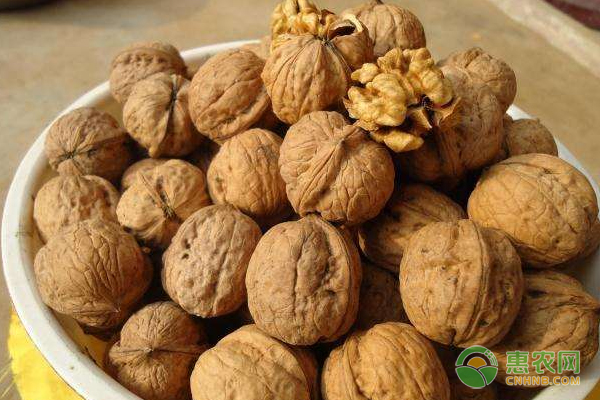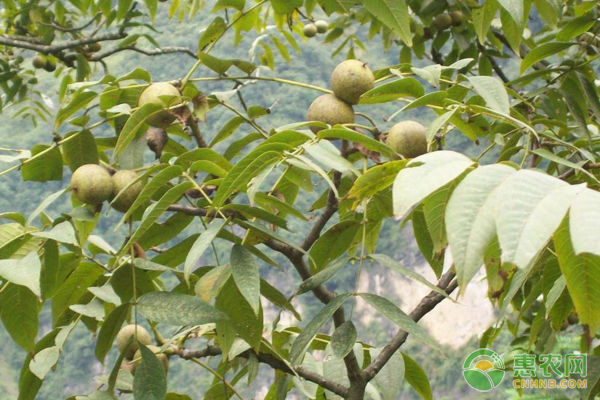Qingshui is a temperate continental monsoon climate with mountainous gully topography. The annual average temperature is 8.8 °C, the annual precipitation is 583 mm, the sunshine hours are 2012 hours, and the frost-free period is 170 days. It is the main walnut producing area in Gansu Province, but it has been subjected to late frost in recent years. After the impact of natural disasters, the yield of walnuts was reduced. Therefore, in 2007-2015, the experiment of high-efficiency cultivation techniques of walnut standardized early fruit and high yield was carried out, and a set of walnut varieties suitable for local cultivation and planting techniques were explored.

1 Basic situation of the demonstration park
The demonstration park is located in Qinzipuliang, Qinting Town, Qingshui County. The test garden covers an area of ​​100 mu, the soil organic matter content is 1.3%, the alkali nitrogen content is 20 cm soil layer is 61 mg/kg, and the available phosphorus content is 20 cm soil layer is 6.83 mg/ The kilogram and 40 cm soil layer is 4.56 mg/kg, and the soil pH is 8.4. In April 2007, the cultivar was mainly Liaohe No. 4, and the pollination variety was Jinlong No. 1, and the ratio of main varieties to pollinated varieties was 5. : 1, the cultivation density is 6 meters × 5 meters. The area of ​​the control garden is 100 mu and the variety is Liaohe No. 4. The plot is adjacent to the experimental park. The soil fertility, planting density and tree shape are the same as those in the experimental garden, and the conventional management method (Table 1).
Table 1 Walnut Garden Management Model

2 Early fruit efficient cultivation technology
2.1 High standard building
(1) Selection of seedlings: 2 years old grafted seedlings are required, and the seedling height is 0.8-1.2 m. The grafted parts are well healed, with 5 to 7 full buds, and the roots are fully developed, no pests and diseases, no mechanical damage.
(2) Tree tray filming and intercropping: Before planting, use the fruit tree digging machine to excavate the planting pit, and dig the soil outside the planting pit to make it 30 cm high, 40 cm wide under the bottom, and 30 cm wide on the bottom. The trapezoidal bandit, steady, flat. Planting and rooting in the spring of the second year, and using K84 bacteria and rooting powder mud to pour the roots into the planting pits, backfilling the mature soil after planting, and setting the depth to the original depth of the seedlings, then each plant should be The root water is about 10 kilograms. The whole line covered a black film with a width of 1.4 meters, the black film was opened and the seedlings were sleeved from top to bottom, and the two sides of the film were compacted with soil. Each tree-sleeve plastic film bag is good for germination of buds, growth of young shoots and prevention of natural disasters. After planting for 1 to 3 years, it is made into arrow beans, and in the 4th year, it is naturally grass.

2.2 Precision Fertilization
(1) Adopting the principle of “relative centralized fertilization, combination of aboveground and undergroundâ€, the soil management of newly-built gardens and young walnut gardens is mainly cultivating loose soil, expanding point fertilization, and tree tray coating. The initial result garden adopts tree belt ventilation. The tree is covered with black film, and the pattern of natural grass and weed growth is observed between rows.
(2) Base fertilizer: After harvesting fruit, use the rotary tiller to deepen 30 cm in the whole garden, and apply 2500 kg of degraded high-quality farmyard fertilizer + 50 kg of biological fertilizer per acre.
(3) Topdressing: Compound fertilizer with NPK 1:1:0.5 before germination from germination to flowering, 0.5 kg for special saplings of fruit trees, and 1.5 kg for fruit trees in fruit trees.
(4) Foliar topdressing: In April and June, spray the leaf leaf treasure or life hormone once every half month, and spray the potassium dihydrogen phosphate once in August.
2.3 film
In the fourth year of planting, the high-mulch black film technology was adopted. After the autumn result, the soil was changed and the fertilizer was applied. From the outer edge of the crown projection, the ridges were traversed from row to row, and the black film with width of 1.4 meters was covered on both sides of the tree row.
2.4 inter-row grass
White clover is planted between rows, and the clover is castrated after 20-30 cm, and the castrated clover is covered under the tree tray; the weeding soil is once in the dormant period, spring and summer.
2.5 irrigation
No irrigation conditions, relying on film and natural precipitation.
2.6 plastic trim
The tree shape adopts a small crown to evacuate the layered shape. The whole tree has 5 to 6 main branches divided into 3 layers, the first layer has 3 main branches, the inner distance of the layer is 50 cm, and the main branch base angle is 80°. 3 to 4 side branches, with a layer spacing of about 80 cm; the second layer has 2 main branches, the main branch base angle is 80-90°, the layer spacing is 20-30 cm, the layer spacing is 70 cm, and each main branch is equipped with 1 Lateral branches; 1st to 2 main branches of the third layer, without side branches, opening angle of 90°.
Trimming in the first year, drying in the spring at 100-120 cm, erasing the 2nd and 3rd buds, promoting the branch in the same year, selecting the main branch, cutting off the base of the sprouting branch and the base skirt in the first half of June; When the spring buds sprout, the new shoots are up to 60 cm in height, and the erect branches and competing branches on the back are removed, and the branches with a base angle of less than 70° are pulled; the third year is trimmed with reference to the second year, and the main branches are The lateral branches are used for topping, picking branches and pulling branches to promote the formation of short branches. In the fourth year and later, the tree shape has been basically formed, and the pruning combined with the topping, taking branches, pulling branches, etc., to remove the secondary branches, the thin branches, the back branches, Competing branches, pests and diseases, etc., to ensure robust results, improve fruit yield and quality.

2.7 Integrated pest control
The main pests and diseases of walnuts include walnut black spot, walnut anthracnose, walnut limb moth, leaf miner and big green leafhopper;
Main pests and diseases control of walnut: combined with pruning, cutting off the pests and diseases, thoroughly clearing the garden; scraping off the trunk and skin of the trunk, deep-turning the whole garden, combining the pest control and drug control; setting the frequency-vibration insecticidal lamp in the garden, hanging the crown Physical control measures such as insect boards, sweet and sour liquids; use of sex attractants to protect natural enemies such as ladybugs and grasshoppers; agricultural measures such as trapping insect belts and tree-covered black membranes through trunks, combined with 4 to 5 waves before germination Meidu stone sulfur mixture.
2.8 Night frost prevention and prevention
The prevention and control of late frost generally adopts measures such as artificial firewood smoke, excavation geotechnical frost-proof kiln, installation of large anti-frosting machine, etc. At the same time, it can also be combined with defoliation and spring germination before spraying the antifreeze to prevent and control late frost. .
Anesthesia Breathing Circuit Sterilizer
Anesthesia Breathing Circuit Sterilizer,Hydrogen Peroxide Disinfection Machine,Hydrogen Peroxide Sterilizer,Anesthesia Machine Ventilator
JIANGSU JIANLAIBANG MEDICAL EOUIPMENT CO.,LTD , https://www.jsjlbmed.com